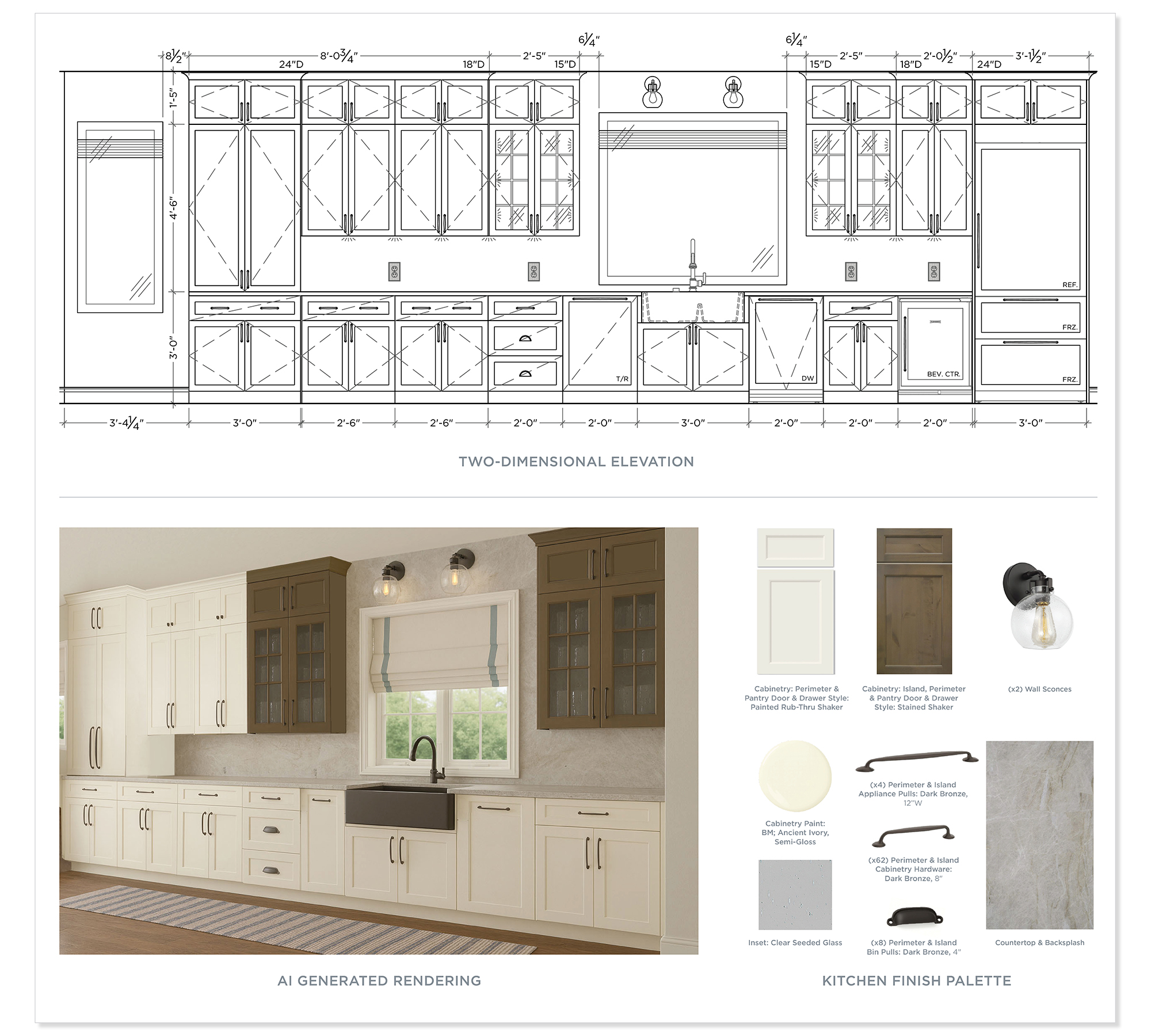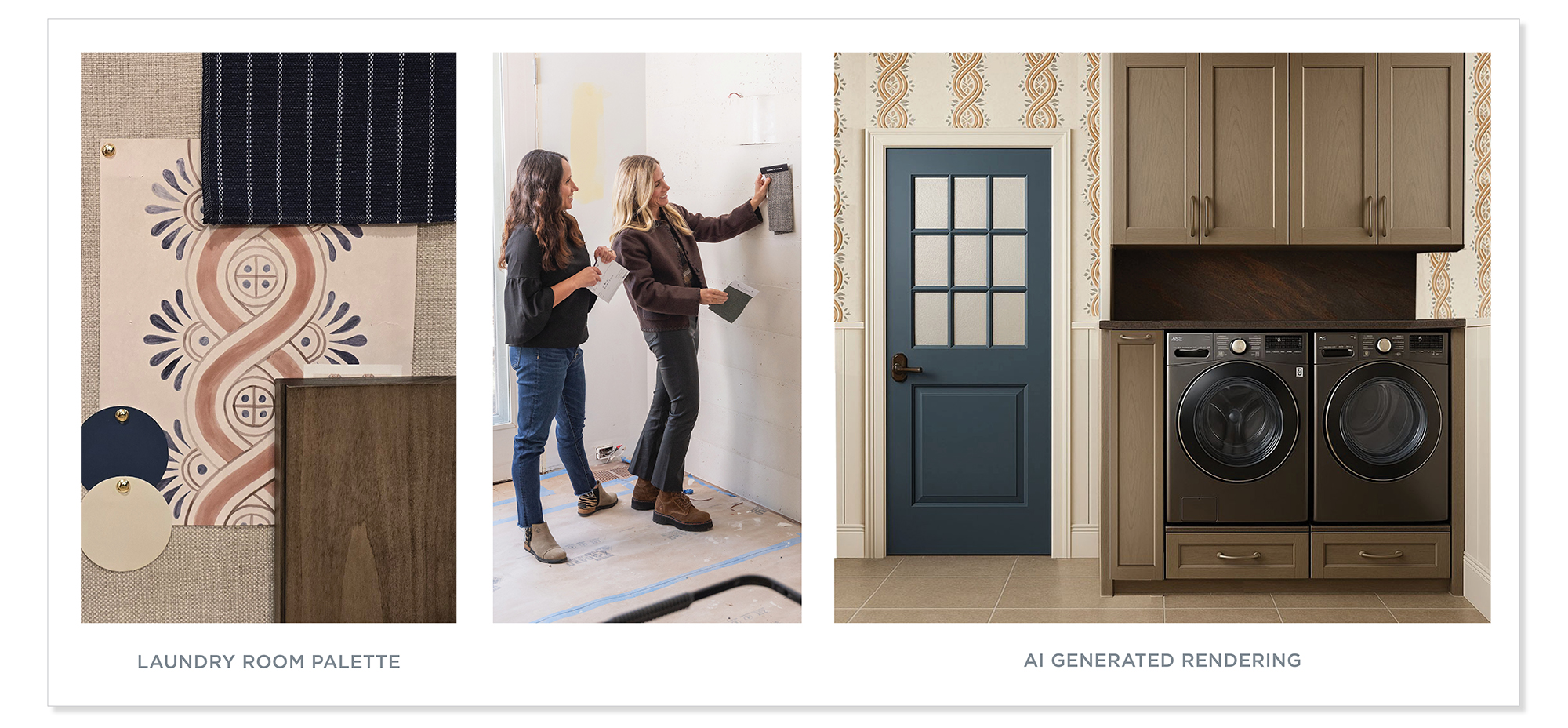If you’ve opened the news lately, you’ve seen it: AI is everywhere. It’s in the way we search, the way we work, and even the way we shop. At Duet Design, we don’t see that as a threat to creativity — we see it as an opportunity to design smarter, serve our clients better, and continue raising the bar on what “full-service interior design” means.
Why We’re Embracing AI
For me, design has always been about clarity and vision. And while AI can’t (and shouldn’t) replace the human touch, it can give us sharper tools to get there. I believe in using technology where it adds value — freeing our team to focus on the craft, relationships, and decision-making that truly require human expertise.
How AI Supports Our Process
Here are a few ways we’re already leaning into AI inside our studio:
Smarter research. Instead of losing hours tracking down product specifications or inspiration, AI tools allow us to sift through options quickly — so we can spend more time curating the right choices for each client.
- ENHANCED PROJECT PLANNING. From organizing meeting notes to mapping out schedules, AI helps us streamline logistics. That means fewer missed details and more bandwidth for design.
- DATA-DRIVEN INSIGHTS. We’re able to look at trends in past projects — like furnishings investment per square foot — and present that information clearly to clients at the start of a project. It takes the guesswork out of budgeting.
- CREATIVE VISUALIZATION. This is one of my favorite uses. With AI, we can take a flat, two-dimensional elevation and generate a rendering that looks almost as real as a photograph. We can apply a specific fabric to the exact furniture piece being proposed, or even take a client’s existing piece and show how it would look reimagined in their new design. It takes something that used to feel abstract and makes it instantly tangible.

Beyond Inspiration: From Unimaginable to Imaginable
In the past, design “inspiration” often came from what was already out there — images on Instagram, magazines, or the portfolios of other firms. While that has its place, I’ve never believed the best work comes from replicating someone else’s vision.
What excites me about AI is that it lets us create our own imagery. Instead of relying on someone else’s project to spark ideas, we can generate visuals that are truly unique to our clients, their homes, and our design vision.
AI stretches the unimaginable into something imaginable. A bold fabric concept can be shown on the actual chair we’re proposing. A custom cabinet detail can be visualized as if it already exists. Entire rooms can be rendered in a way that feels as real as a photo — but unlike inspiration pulled from Pinterest, these images reflect our creativity and our client’s home.
For me, that’s where AI becomes magical. It’s not about replacing design — it’s about expanding what’s possible, so clients can see and feel the originality of their project long before installation day.
What AI Doesn’t Replace
AI will never replace the cornerstone tools of our trade — programs like Revit, AutoCAD, Photoshop, and InDesign. These remain the foundation of how we draft, document, and execute projects with precision.
And more importantly, AI will never replace what our clients trust us for: the emotional intelligence of design.
AI can’t walk into your home and sense how you want it to feel.
AI can’t read the nervous energy when a client worries about budget.AI can’t stand in a room and imagine the way light will move across the walls at different times of day.
That’s our job. The artistry, restraint, and emotional intelligence that define Duet Design will always come from humans — not algorithms.

What This Means for Our Clients
The benefit for our clients is simple: you get the best of both worlds. A team that uses the smartest tools available to work efficiently and clearly, while still designing homes that feel deeply personal, beautiful, and one-of-a-kind.
AI helps us cut through the noise, visualize design in ways that feel real, and clarify complex ideas. But it’s our vision — and your story — that guide the design.
The Takeaway
We’re not chasing every trend, and we’re certainly not handing over the reins to technology. But we are leaning into AI where it enhances our process, clarifies our communication, and even unlocks new ways to help our clients “see” their home before it’s built.
For us, “intelligence” in design means more than just AI — it means using every tool available, human and digital, to create homes that are livable, lasting, and uniquely yours.

















